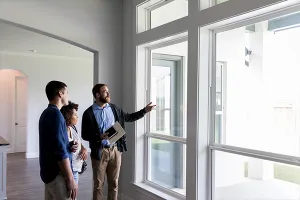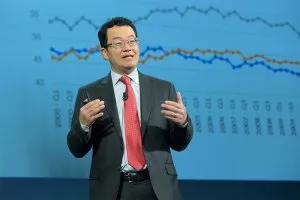
Since the beginning of time, humans have moved from one place to the next. Mass migrations like the Gold Rush of the 1800s and the Great Migration of the 1900s were led by populations motivated by historic events, urgent needs, opportunities, and tragedy. Similarly, COVID-19 was a catalyst for movement. According to U.S. Postal Service data, the pandemic increased relocations in 2020 by more than 94,000 compared with 2019.
Many recent moves have been anything but typical. The National Association of REALTORS®’ 2022 Profile of Home Buyers and Sellers reported that the distance between the home buyers recently purchased and their previous residence, typically about 15 miles, jumped to 50 miles in 2022. Additional data showed that small towns and rural areas had the largest increase in homebuyer activity. What’s driving the change? And how can real estate practitioners pivot to navigate through it?
Something Different

After spending most of her life in New York City, Katie Krimer wanted a change of pace and scenery. In 2021, she moved to the smaller, less expensive city of Philadelphia. Not long after, a new world called.
Today, she lives on “Sleepy Goose Farm,” a nickname she and her husband coined for their 3.4-acre property in Ulster County, N.Y.
The home and attached barn, built in the 1850s, sit far back from the road, surrounded by trees. Krimer and her husband toured the home virtually. As her agent carried the camera through the grand entryway and up the wooden stairs, she knew immediately that she needed to make the move. It’s a far cry from the cobblestone streets of Philadelphia or the skyline of New York. “I knew I wanted quietness, and I knew I wanted more nature,” Krimer says.
Overall, NAR’s report found that affordability, proximity to family and more space were leading external factors for buyers. While these factors are consistent with previous years, a deeper look at one of the most lucrative groups of buyers reveals an extreme shift: Repeat buyers made major life swaps, says Jessica Lautz, NAR deputy chief economist and vice president of research. “When you look at your typical repeat buyer, they’re moving at a median distance of 90 miles,” much farther than in past research, she says. “This implies that people are looking for different things when it comes to neighborhood choices.”
According to Katrina Johnston-Zimmerman, Philadelphia-based anthropologist and founder of THINK.urban, the journey starts within.
“A lot of people felt a certain urgency for purpose in life, and to change the way they were living,” Zimmerman says of the pandemic-induced changes. “This was a cumulative and collective existential crisis. When you’re faced with something really, really up close —‘Am I happy?’—you’re forced to actually revisit it.”
Zimmerman cites the overall change in mindset from “working to live” toward more purpose-driven lifestyle decisions as a key shift.
No Longer Bound
Clearing the path for a change in mindset was the domination of the remote and hybrid work model. The virtual work-style impacted nearly 30 million workers through 2021, according to a report from the U.S. Census Bureau.
“The whole landscape of my industry has been completely transformed by COVID,” said Krimer, a licensed therapist who now works remotely.
Relatedly, NAR’s report sites that 33% of buyers listed convenience to a job as a key factor in their neighborhood choice, compared to 42% the year before. “The commute time in the laundry list of neighborhood choices has moved down the list,” says Lautz. “People’s convenience to their job is less important because you can easily work from home.”
And while migration has slowed since the height of the pandemic, NAR’s latest Migration Trends Report found that in 2022, towns like Ocala, Fla.; Tallahassee, Fla.; Charlotte, N.C.; and Savannah, Ga., continued to gain buyers and topped the list for net inward migration.
“They can work remotely, and they see Charlotte as being an incredible city to live in,” says Tiffany Johannes, CRS, GRI, general manager and broker in charge at RE/MAX Executive Carolinas in Charlotte. Buyers are drawn to the area’s affordability, entertainment, parks and quality schools. “Charlotte today sees about 100-plus people a day moving to our area,” adds Johannes, 2023 president of the Canopy REALTOR® Association.

Much of the migration has been to the suburbs and beyond. Overall, NAR analysis shows, small towns saw a 9 percentage point increase in sales, and rural areas saw an increase of 6 percentage points.
“When people move further out, it’s not necessarily just about having that extra land,” Johannes says.
Affordability was a factor even before the pandemic. And now many rural and suburban buyers are looking for places where they can have more curated and personal experiences. “They are finding value in a home that can have a workshop attached or a bigger garage, depending on what their hobbies are,” she notes.
These days, when she’s not working or renovating her fixer-upper home, Krimer finds balance through activities like painting, hiking and birdwatching. “I’m already starting to think about what landscaping stuff I can get into,” she says.
If You Build, They Will Come
Buyers like Katie Krimer are bringing new life to smaller towns, observes Chuck Petersheim, home builder and founder of Catskills Farms in Hudson Valley, N.Y.
After riding the wave of early pandemic uncertainty, Petersheim could see that buyers were investing big in outlier locations like Hudson Valley. “A little ripple became a wave, became a tidal wave ... became a tsunami,” he says. Since the start of the pandemic, Catskills Farms has generated more than $40 million in sales, up from $8 million in 2019.
Areas like the Hudson Valley, once known for seasonal visitors, suddenly had a population looking to stay. According to a report from the Hudson Valley Pattern for Progress, for the first time in more than a decade, the nine-county region gained more people in 2019–2020 than it lost.
“It wasn’t clear until the following year that this was sustainable,” says Petersheim of the sprawl he first felt in 2020. But as he built for full-time residents, new grocery stores, shops, and restaurants sprang up to meet the added demand.
Other smaller or rural areas like Williamson County, surrounding the booming tech hub of Austin, Texas, are also ramping up development activities to meet the needs of incoming buyers. The area’s strong internet broadband capabilities and home affordability placed it among areas like Forsythe County, Ga.; Douglas County, Colo.; and Delaware County, Ohio, on NAR’s list of top work-from-home counties—all areas that have continued to outpace the average in their states and across the country.
“I knew I wanted quietness, and I knew I wanted more nature.”
—Katie Krimer
According to Brandy Wuensch, GRI, broker-owner of City View Realty, there’s one other benefit that makes areas like Williamson County the apple of everyone’s eye.
“For new construction in Austin, you’re looking at builds of 18–24 months, whereas in Cedar Park or Leander in Williamson County, builders were able to turn over new-construction homes in six to eight months,” she said. This opened the gates for first-time buyers eyeing new homes without the high price tag or longer build times.
That’s not all: New neighborhoods in Williamson County tout solar panels, automated home features and high-fiber cabling. And developments like the 183 Revitalization project in Cedar Park are breaking ground for mini city centers.
Adapting to the Changes
Navigating through change isn’t new to Julia Hoagland, CRE. The New York broker and leader of the Julia Hoagland Team, Compass, forged through the aftermath of 9/11, the 2008 market crash, and now the COVID-19 pandemic. “Demand doesn’t stop accruing, it just stops executing while things are uncertain,” she says.
“There will always be people who want the dynamic nature of city centers,” Lautz says, “who wants to be able to pop down to their coffee shop or walk down the block to their favorite bar.” Real estate practitioners can stay ahead by broadening their marketing approach and tapping into the benefits of technology. “Our members have beefed up their skills in how they’re showcasing homes. I do think it matters more in a transitioning market,” she says, noting that more than 60% of sellers who moved 51–100 miles from their previous residence used a different real estate agent than the one they’d used before.
The way to stay valuable is to stay in the know. “Education, education, education,” Johaness says. Also, “get clients up to speed on what’s happening in communities they’re interested in,” she suggests.
“Follow the life changes of your clients. Identify which markets people, in theory, could move to,” Hoagland says. “Reach out to brokers in those areas, and ask to set up a referral relationship. We do a lot of referral business locally, nationally and internationally because we like to help people and, also, it’s good business for us. To the extent that we can embrace the dreams of our buyers and our contacts, even if they’re not in our market, that’s going to be meaningful.”
And it might not be long before grateful buyers are knocking on her door again. “What we’re feeling on the ground,” Hoagland says, “is that people are
coming back.”








